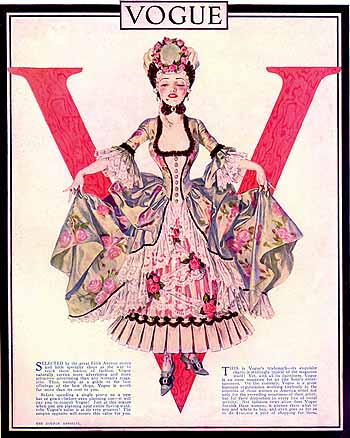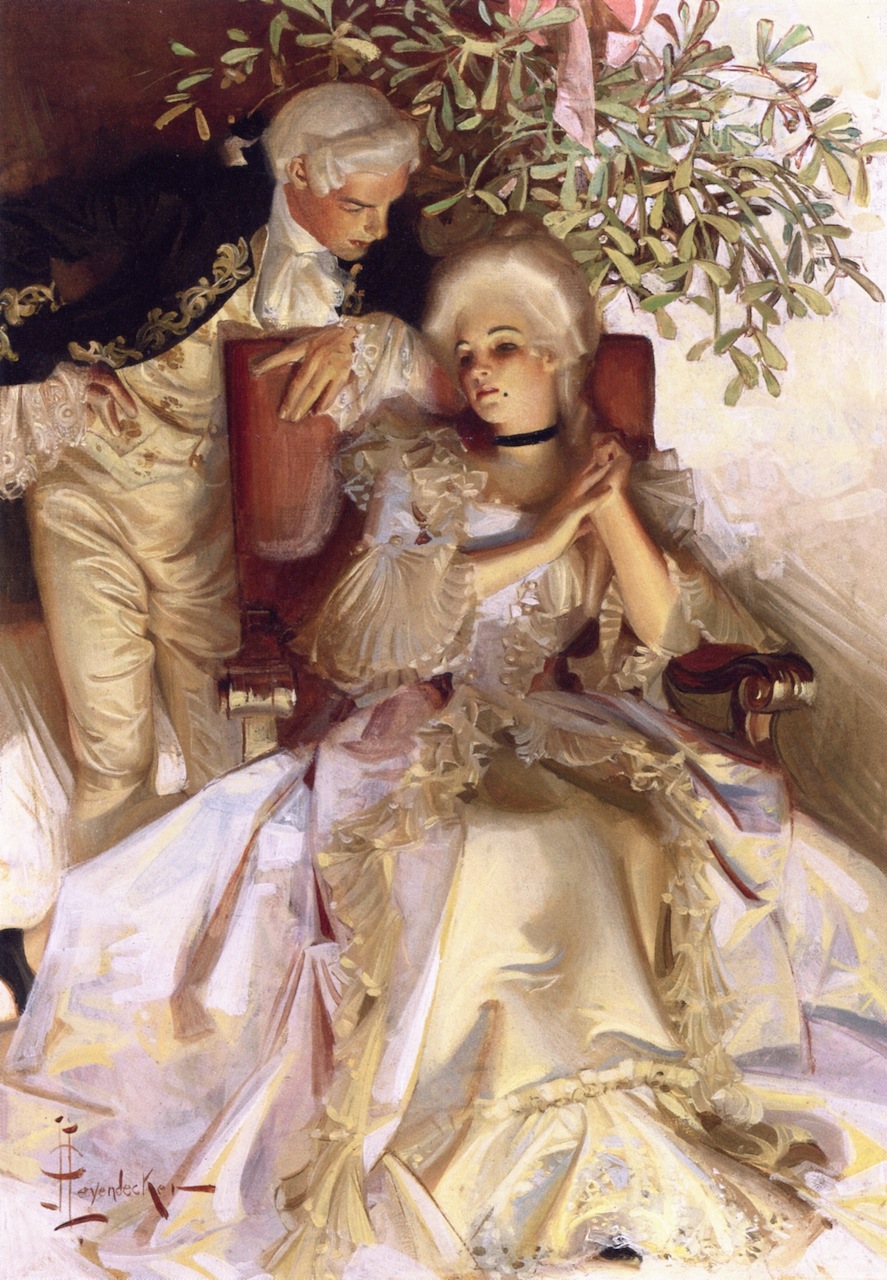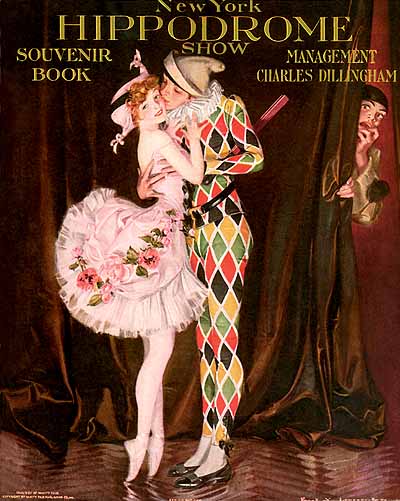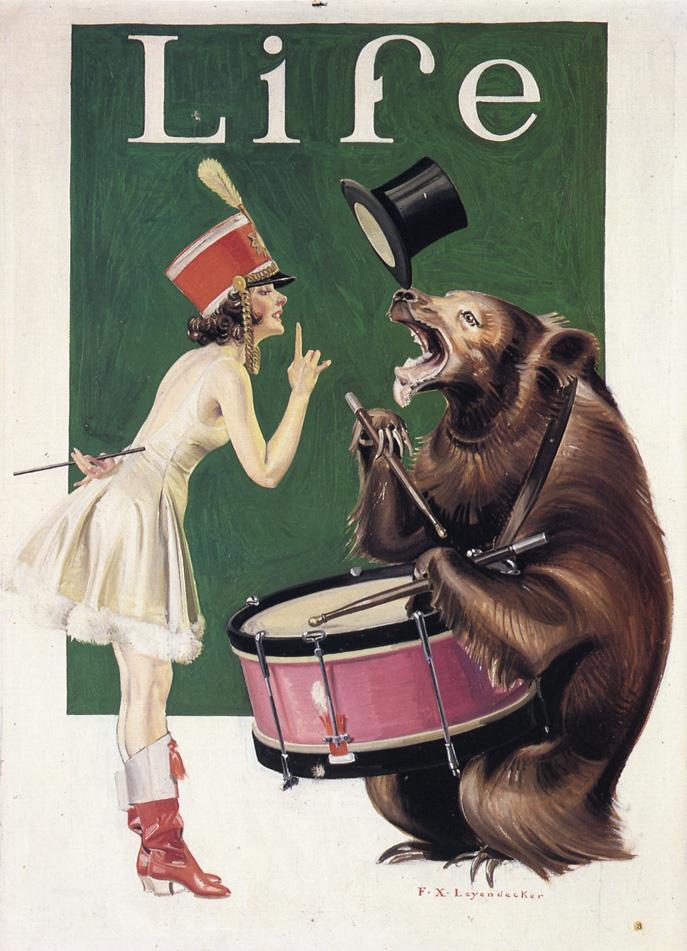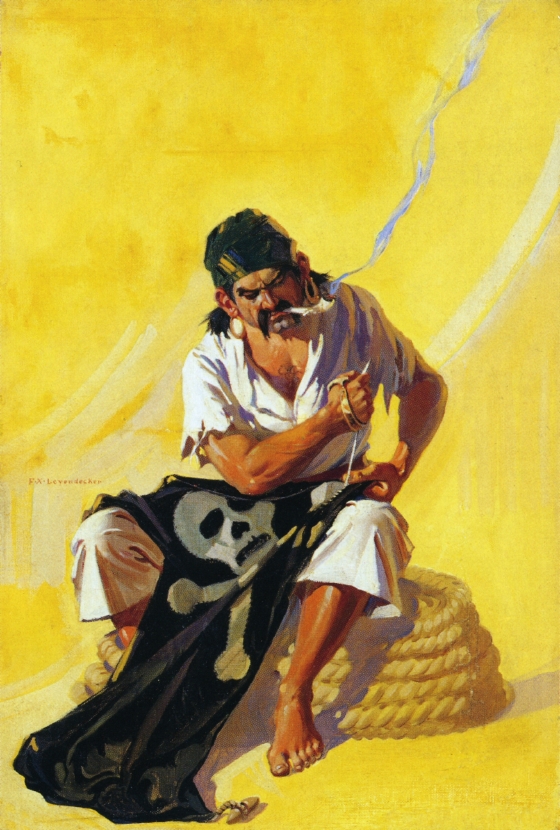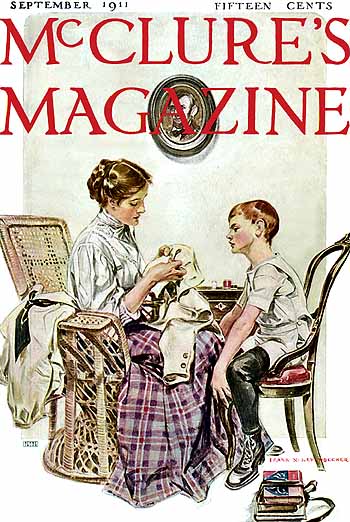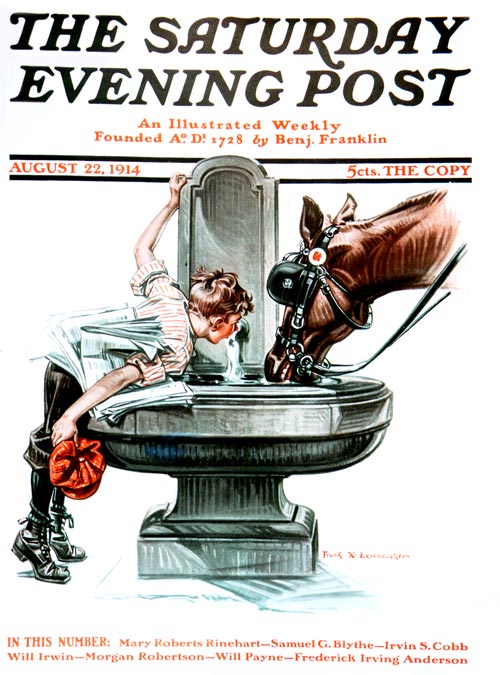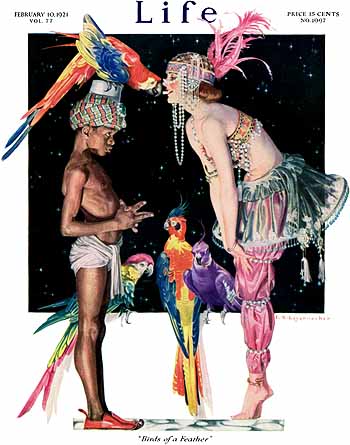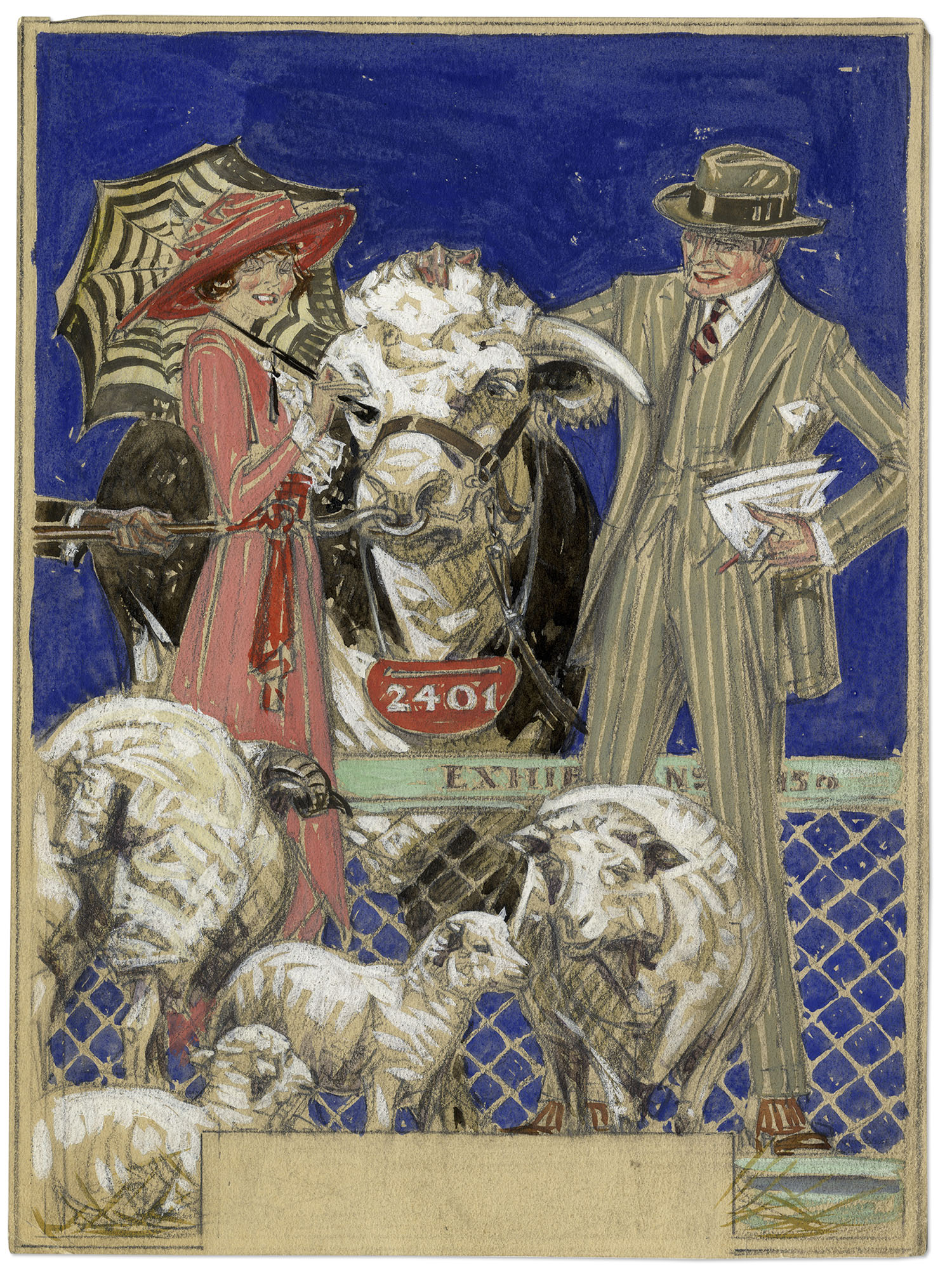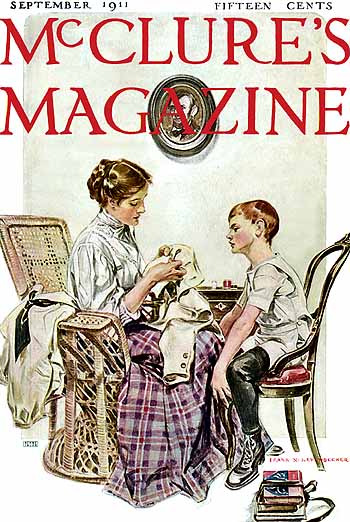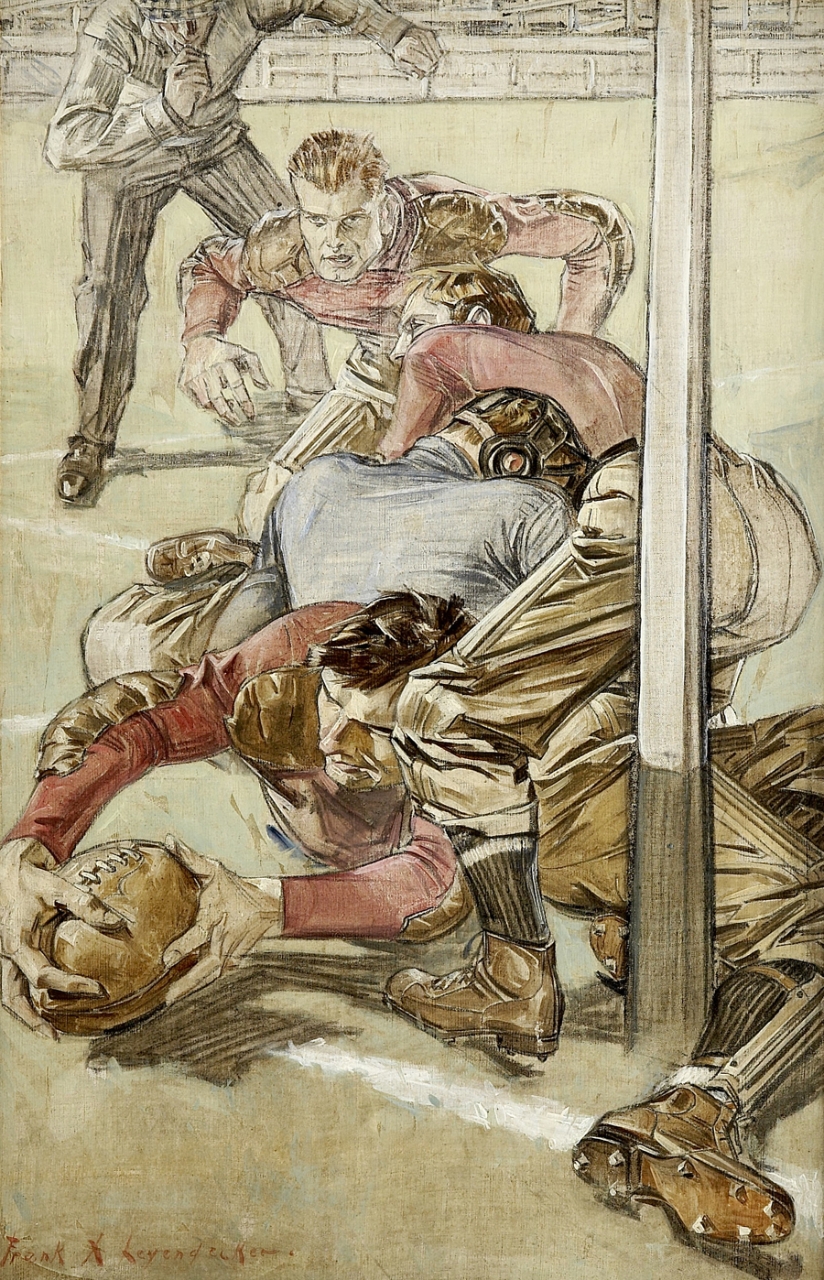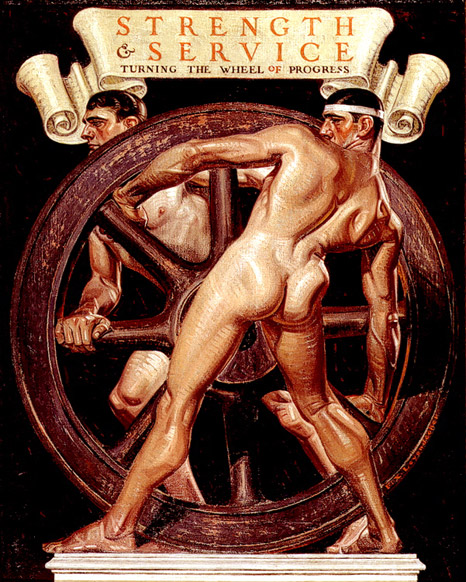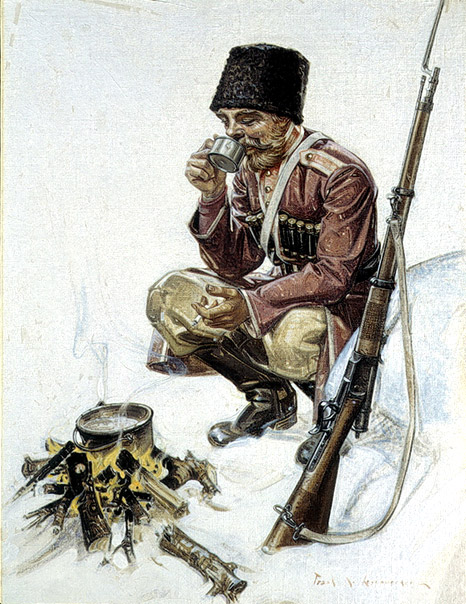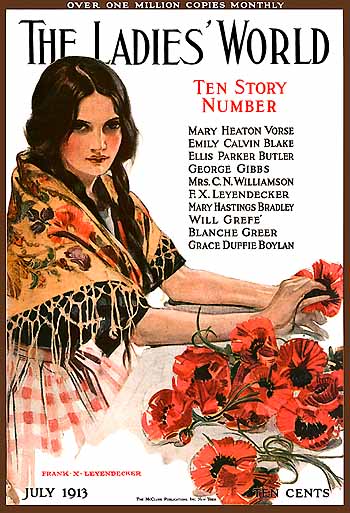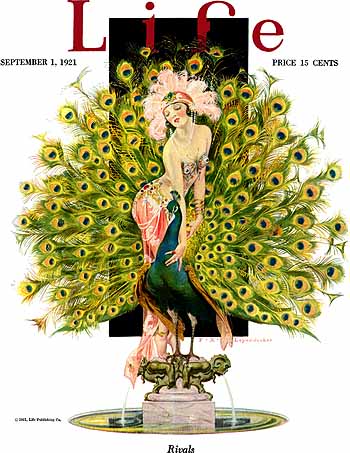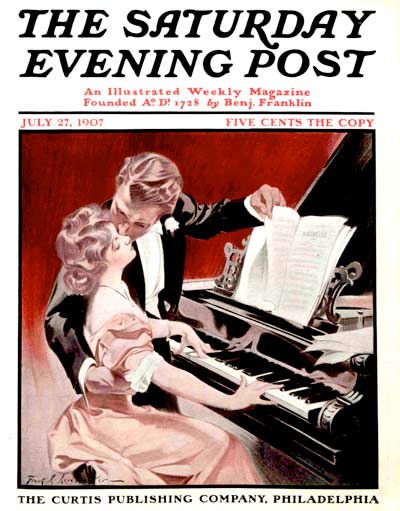Frank Xavier Leyendecker was American illustrator of the early 20th century. He painted several well-known covers for Collier’s magazine as well as for a number of other periodicals.
Background
Leyendecker was born in Montabaur, Germany, on January 19, 1876. He was the son of Peter Leyendecker and Elizabeth Oreseifen Leyendecker. He had three siblings: a brother, Adolph A. Leyendecker; a sister, Augusta Mary Leyendecker; and one more brother, Joseph Christian Leyendecker. In 1882 the Leyendecker family immigrated to Chicago, Illinois, where his mother's uncle had founded the successful McAvoy Brewing Company.
Education
Frank Leyendecker studied at the Chicago Art Institute and later the Académie Julian (now part of ESAG Penninghen) in Paris under the guidance of Benjamin Constant.
Career
In 1897, the Frank Leyendecker together with his brother Joe returned to Chicago to begin their careers as illustrators. However, Frank Leyendecker returned with addiction problems, which would plague him for the rest of his life. The two brothers set up a shared art studio in Chicago where they had early success in advertising.
In 1900, Joe, Frank, and their sister Mary moved to New York City, then it was the center of the American commercial art, advertising and publishing industries. During the next decade, both brothers began lucrative long-term working relationships with apparel manufactures including Interwoven Socks, Hartmarx, B. Kuppenheimer & Co., and Cluett Peabody & Company. Frank Leyendecker got off to a flying start. In the first six years Collier’s commissioned him for twenty-six covers, while Joe painted fewer than half that many. However, after the initial success, Leyendecker fell under the overwhelming shadow of his prolific elder brother, and became known as "The Lesser Leyendecker." But still his Collier’s covers are considered to be among the most important magazine illustrations.
Frank Leyendecker illustrated Rudyard Kipling’s futuristic science fiction story entitled "With The Night Mail" for Doubleday in 1909. Besides, Leyendecker was an author of advertisement illustrations for such customers as Luxite Hosiery, Palmolive Soap, Remington Arms, and Willy’s Motors. He created cover and interior illustrations for Colliers, Leslie's, Life, McClure's, The Saturday Evening Post, Vanity Fair, and Vogue. He also painted covers for Street & Smith pulp magazines, such as People's Favorite Magazine and The Popular Magazine, as well as for Fawcett’s pulp magazine Battle Stories.
In 1914, Leyendecker moved into his brother’s newly built mansion in New Rochelle, New York. There also lived Joe Leyendecker’s partner and model Charles Beach. Frictions between Frank and Beach became a common thing. Finally, the brothers fought over Beach and Frank Leyendecker moved out of his brother’s house in 1923. Frank Leyendecker was depressed and in ill health from his ongoing drug addiction and a career that was all but over. Eventually, he committed suicide by morphine overdose in 1924.






